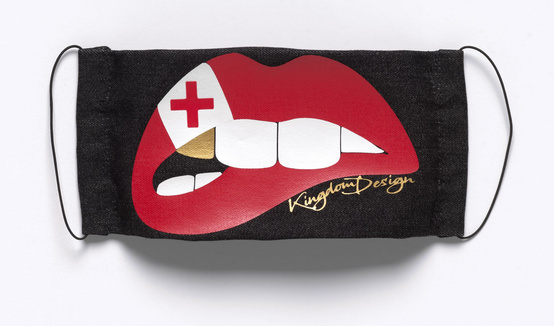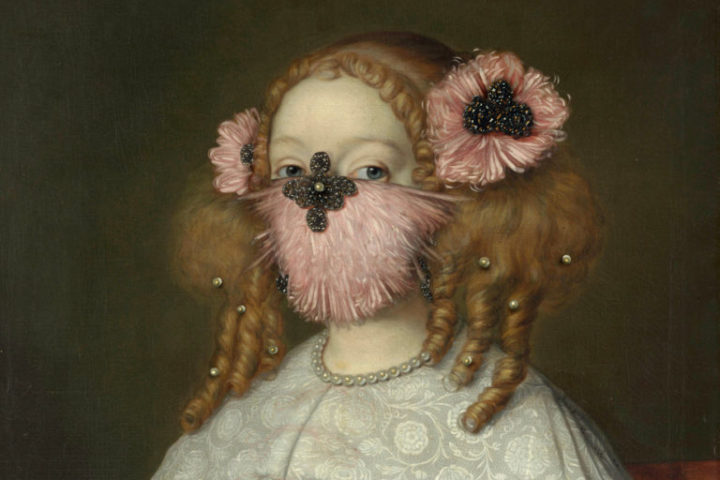
Corinne Thépaut-Cabasset
ICOM Costume President
Museums have no borders,
they have a network
April 19, 2022
Keywords: Covid-19 mask, Collections, Museums, Global crisis, Pandemic
This controversial object then became, depending on the context, an identity, political and social marker; an industrial, homemade, craft, artistic or performance product; and an accessory associated with the fashion of the time. So many different productions, means, invention and creativity could not leave our network of professionals, specialists in clothing, its trends, materials and manufacture, indifferent. As chair of the ICOM International Committee for Museums and Collections of Costume, Fashion and Textiles, ICOM COSTUME, I thought very early on that the Committee should be involved in an action targeting face masks produced during the Covid-19 crisis and afterwards.
It was obvious that some museums would collect masks, either for sociological or ethnographic purposes, or to complement existing fashion collections of masks from the textile industry, fashion houses and couture houses. This small piece of textile, paper or any other material had thus become the symbol of a global crisis. Worn everywhere and by everyone around the world regardless of gender, age (or almost), religion, traditions and culture, the mask has become part of the clothing apparatus for the duration of the global health crisis. ICOM COSTUME fulfilled its role in recording and organising the collective memory of a key object of this moment in human history.

Rahul Mishra ‘Butterfly people mask’ (Art & Intervention) ©Asian Civilisations Museum, Singapore
Clothing the Pandemic: The implementation of an international online virtual exhibition
The idea of the virtual exhibition was evident in a context when limits imposed by social distancing led to the development of the digital offer in museums. This exhibition, the first of its kind to be international and in collaboration with several museums based in different countries around the world, was conceived and implemented in the same way as an on-site exhibition. It was put together through bi-weekly curatorial meetings, virtual museum work, object sheets, loan requests, editing, framing, copyright searches, marketing and promotion. This exhibition is the result of a collaborative writing process, based on a synopsis translated into the three official languages of ICOM (English, French and Spanish).
The partner museums for this project were easily identified following the first call on the ICOM Costume website in May 2020. First, the Westminster Menswear Archive at the University of Westminster in London, and three curators from the Fashion and Textiles and Islamic Arts Departments of the Royal Ontario Museum in Toronto were able to assemble a collection of over 200 masks from around the world. The National Museums of Scotland, the Te Papa Tongarewa Museum in New Zealand, the Budapest Museum of History and the Mucem in Marseille then followed the project. Finally, the Asian Civilization Museum in Singapore, the Kordiliyera Museum of the University of the Philippines, the Design Museum in Barcelona, the Rose Archive for Fashion and Textile in Shenkar, the museum at the Fashion Institute of Technology (FIT) in New York, the Centraal Museum in Utrecht in the Netherlands, the Victoria & Albert Museum and the British Museum in London, and the Musée Théodore-Monod d’art africain in Dakar also joined the initiative.

Czarina Wilson ‘Tonga Flag Nifo Gold’ (Limited Edition) Prototype face mask, Tongan/New Zealand (Art & Intervention) ©Museum of New Zealand Te PapaTongarewa All Rights Reserved
This melting pot of languages, cultures and disciplines enriched the Clothing the Pandemic project and contributed to its international influence in the museum world and beyond.
The realisation of the exhibition (digital support and graphic design) and the accompanying activities (translations, publications and distribution of flyers, online workshops and webinars, editing and publication of videos on the YouTube channel) were financially supported by ICOM COSTUME and the ICOM Strategic Allocation Review Committee (SAREC). Other Committees partnering on this project are ICOM Canada, ICME and ICOM CC, who actively contributed to the workshops, online publications and webinars.
References
From December 201 to December 2022
Article on the National Geographic
Main photo : Hidden Van der Helst III, based on a Portrait of Adriana Jacobusdr Hinlopen by Lodewijk van der Helst, 1667, The Rijksmuseum,Amsterdam, Photocollage Volker Hermes, 2020, Courtesy of the artist.www.volkerhermes.de @volker.hermes
